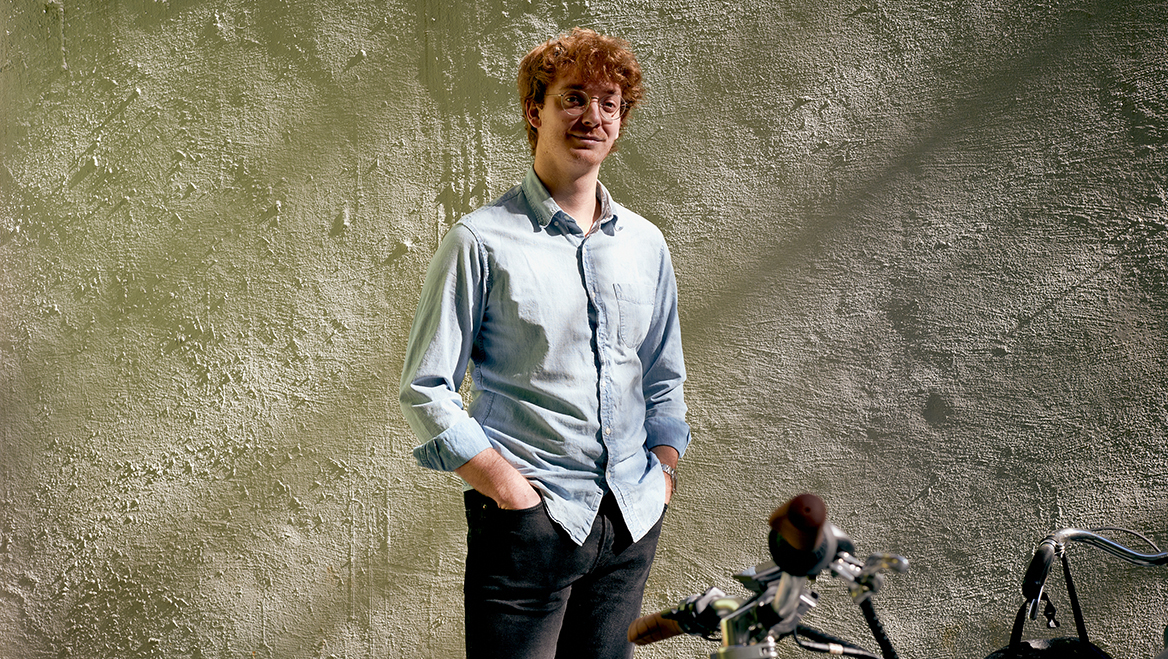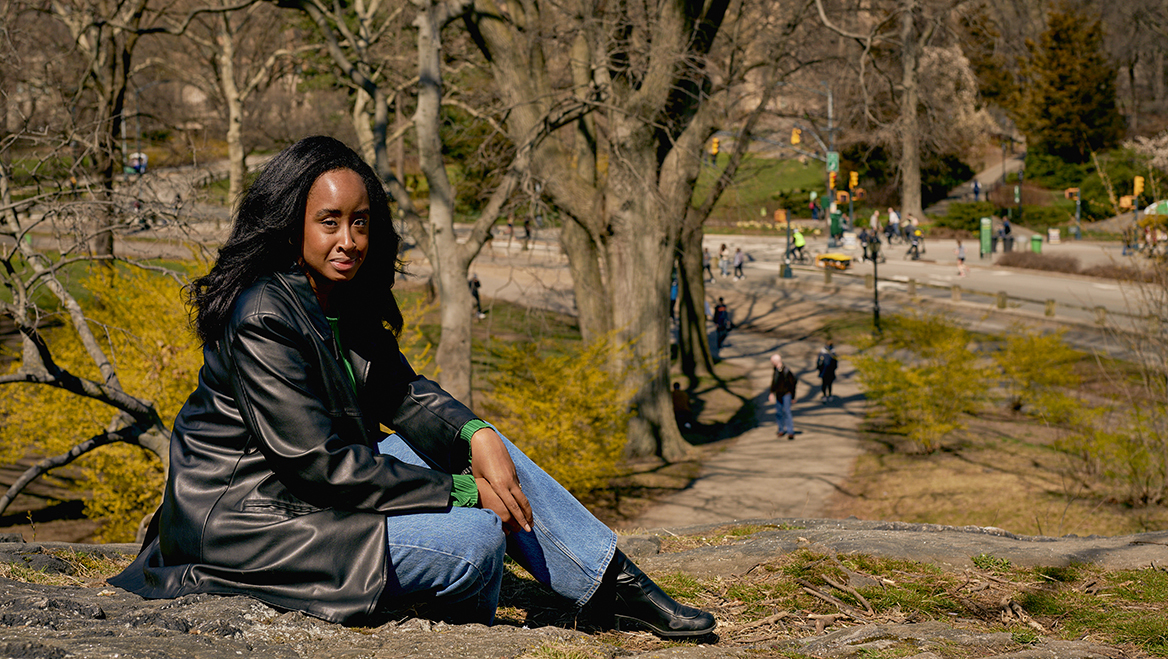April 17, 2023
Brittany Simmons's videos have amassed more than 2 million likes on TikTok (@signedbritt). Why is that planning news? Because the 26-year-old urban planner's content revolves around her experiences working in the field and her general passion for cities.
"I want to show folks that if they're interested, they can be involved in what happens in their communities and what [those actions] look like, whether that's as a working planner or as an engaged resident," she says. Simmons highlights the emotional impacts of urban design through posts that discuss how car-centric cities make friendships difficult, for example, or how a walkable college campus makes student life memorable.
Urban planning content — often tagged as "#PlanningTok" or known broadly as "CitiesTok" on TikTok — reaches and influences a diverse array of social media users who otherwise might never hear of or participate in the field. The hashtag #urbanplanning has more than 62.6 million views, while #walkablecities has more than 97.5 million views on TikTok, showing the internet's growing interest in city life, planning policy, and urban history.
The result? Demographic groups creating and engaging with urban planning content are shifting. The planning field has historically been — and still is — dominated by white men, with few women of color, LGBTQ+ people, or people with disabilities recognized for their contributions or status as stakeholders. In practice, this has led to the widespread exclusion of their needs and hesitance from young people from these groups to enter the field. Social media, however, could help change this by presenting planning from a diversity of viewpoints.
This emerging cohort of content creators is not only introducing younger audiences to urban planning; they're also highlighting a growing diversity of thoughts and identities in the field. These influencers are providing valuable representation that helps their followers envision the careers they could pursue — and the change they could spark.
"It's really an issue when you go into a field and you see nobody like yourself doing it," one follower commented on a video made by Sadiyah Sabree, a planner with a popular YouTube channel who is a Black Muslim woman. "I see you, and I am all of a sudden far more motivated to get into this field."
#CitiesTok is recruiting new planners
When Paul Stout, a landscape architecture student at the City College of New York, studied abroad in Salzburg, Austria, not needing to use a car for everyday tasks was a surprising and formative experience. This eventually led him to work for Culdesac, a walkable, car-free neighborhood back in the U.S.
Studying topics like redlining and zoning policy in school further flamed his interest in the field. But Stout regretted not knowing about urban planning sooner, so he started posting short videos on TikTok (@talkingcities) to make the ideas he found interesting more accessible to others.
"Many ... younger people intuitively understand some of these concepts yet have not been formally introduced to them or equipped with the language to talk about them," Stout says. "[Through posts like mine], young people on TikTok are discovering the extent to which our built environment is intentionally planned and designed."

TikTok creator Paul Stout (@talkingcities) explains how cities are designed — and according to his comment sections, his posts are inspiring young people to study planning. Photographs by Gabby Jones.
For example, his post on Barcelona superblocks highlights how Spain easily and cost-effectively makes its cities walkable, and how these changes positively affect residents. Another post shows how the mayor of Carmel, Indiana, worked to introduce pedestrian-friendly roundabouts.
"Often, my followers are young people who have grown up in auto-centric North American suburbs," Stout says. "They seem dissatisfied with the status quo of our built environment. And I have had a number of comments tell me that they have pursued education or switched their major because of what they saw on TikTok."
Social media is a powerful force of influence. It's turning planning from a casual fascination to full-time careers for young people who know they want to play a part in transforming their communities but aren't sure how. Stout regularly receives comments from viewers like, "This account is one of the reasons I switched to civil engineering for my degree," and, "I didn't know how interested I was in urban planning/design."
This content is particularly resonating with Gen Z and young millennial followers who are struggling with rising housing costs, lack of walkable communal spaces, and high dependence on cars.
"When I walk down city streets, I create spontaneous Instagram Stories that ask why the built environment is designed and built the way it is," says Laura Frances, who has been posting urban planning content on Instagram (@lauralonglastname) since 2014. She is currently studying urban technologies at the University of Pennsylvania.
Frances highlights urban design problems she sees in her everyday life, such as overhead exposed wires that make it risky for pedestrians to pass by below. She also posts about the good things, like trash cans lined with planters that show how unexpected objects can beautify communities while promoting sustainability.
"My stories often present some historical context and provide details on how it may have come to be. Like, why do sinkholes form? Why are these protestors blocking a demolition? Why do old banks look like churches?"

Laura Frances (@lauralonglastname) co-organized the Wharton Future of Cities Conference in 2022.

Her content includes the bad and good design she sees in her everyday life, like a picture of trash cans lined with planters.
Noticing the planning-related problems and innovations in her city inspired Frances to start a development company, Built Interest, that emphasizes placemaking, user design, and tech integration. "The subject is not just a hobby, but something I've chosen to understand and contribute to deeply," she says.
This strikes a chord with her followers, who confront similar problems in their neighborhoods and feel the urge to share them. Mary J. Hachey says following Frances on Instagram has deepened her understanding of her surroundings. "I walk around cities looking at things differently, from a different perspective, and asking myself different questions," she says.
Diversifying the profession
Simmons says she often receives the same question from her followers: "What can I do to get to where you are in your career?" So she made a video showcasing a day in her life as an urban planner at a consulting firm. Alongside her full-time job, she maintains her account as a resource for aspiring planners.
"Social media is demystifying what urban planning is, how it happens, and how we got to where we are today," she says. "Younger folks and historically marginalized groups are being introduced to the field, and in the future, that could lead to greater diversity among planners, and thus more inclusive city design."

Through social media, Simmons sees younger and historically marginalized groups being introduced to the field, which could lead to greater diversity among planners. She stokes interest in planning by posting about relatable topics like third spaces (below, in collaboration with Planning). Photographs by Gabby Jones.
Today, nearly 75 percent of urban planners are white, while 67 percent are men. Creators like Sadiyah Sabree, who works in community development, have grappled with this problem firsthand and are advocating for more diversity in the field.
"For urban planners of color, it is our job to properly explain to our communities what it is that we do so people of color don't let the lack of visible Black planners stop them from joining the field," she says in one of her YouTube videos. She posts several Q&A-style videos answering questions from her audience, sharing planning resources, and offering information about career options so more people of color and people from other underrepresented groups can enter the field.
Every follower may not become a planner, but this content can help young people envision themselves in the field — especially when they see more diverse representation. On one of Sabree's career videos, a viewer commented, "I just [graduated] with my masters in urban planning! It's so nice to see Black women getting into the field. Marginalized groups are often highly impacted by city plans, but they often do not have the privilege to be active in the decision-making process to begin with."
It's well reported that Gen Z turns to social media for career advice. YouTube and TikTok give a peek into what life in a profession could be like, as well as the problems that one could help solve as a planner.
"A different future requires different people at the table, different people leading tables, and — for that matter — different tables," says John Joe Schlichtman, an associate professor of urban sociology at DePaul University, Chicago. "Breaking urban planning content out of its usual confines is a way to nudge things in that direction."
Taking planning lessons offline
"Social media is now drastically reshaping the urban planning paradigm, as citizens themselves are a crucial source of user-generated data, continuously supplying real-time information about their preferences and requirements, which can help to improve urban planning," says Steffen Lehmann, professor of architecture and urban design at the University of Nevada and founding director of Urban Futures Lab. "It ensures a more holistic analysis of what is actually happening on the ground."
Residents have always been actively shaping their communities, but social media can amplify those changes and create a new space for planners and residents to collaborate. Take Phyllis Mack, a Denver resident who uses a wheelchair and successfully leveraged this generative intersection of planning, community, and social media.
In 2022, Mack applied for and won a grant to interview Denver Housing Authority residents about accessibility and a potential participatory budgeting process. With help from Pedestrian Dignity activist and TikTok creator Jonathan Stalls, Mack's research resulted in $400,000 in funding to design, construct, and maintain accessible sidewalks around her housing complex.
Researchers have already begun studying the various methods urban planners can use to gather data from social media that could potentially influence policy decisions. Online content tools like video comments, web forms, audience polls, hashtags, and forum discussions can give planners an instant, deeper insight into what people are thinking — and what kind of change is needed.
"Social media is a place where we can tap into ideas previously limited to often formidable texts," says Schlichtman. "They are a finger on the pulse of urban planning discussions on topics like gentrification, suburbanization, and transportation."




